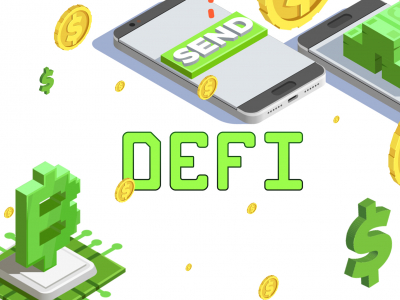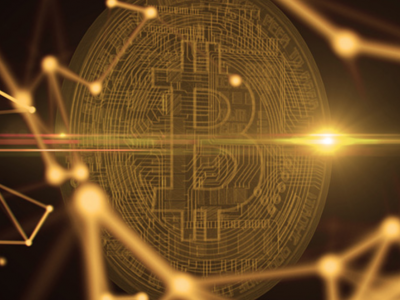The service would make it possible to obtain a loan online with the help of a comfortable interface, available both in desktop and mobile versions.
It would take the user minimum of time: one would not be obliged to go to a bank, and the loan interest rate will be lower than in banks. Such a platform would make it possible to eliminate the fees paid to the middlemen such as banks and microfinance organizations. The participants of the blockchain from the creditor side could be attracted by high returns on their investments: the interest rate will be higher than in the bank interest level. The investors would also be able to decide which loans to finance and to what extent.
Over the last years, the P2P lending market, enabling people to take direct loans from each other without any financial middleman, has grown manifold.
Principal markets for P2P lending are countries with developing economy and numerous population – China and India. According to the American marketing company Transparency Market Research, “In 2014, out of the 400 million borrowers in India only one in every seven borrowers acquired a formal loan.” The growth of demand for P2P lending in Asia-Pacific Region will swiftly grow because many inhabitants of the region do not have bank accounts, and there are new small and medium enterprises that need credits but cannot overcome the unduly exigent criteria of the bank organizations.
According to an assessment by TMR, the volume of the global market of P2P lending can grow manifold and reach $897.85 billion by 2024. As of 2015, it was evaluated at $26.16 billion. The P2P loans mainly belong to one of the following categories: consumer credits, student loans, real estate and the development of the small business.
The small businessmen are expected to become the main users of the P2P loans. The compound annual average growth rate of this segment between 2016 and 2024 is expected to amount to the stunning figure of 48.8%.
The Loanbit platform will have an advantage because of using the blockchain technology. It will enable the investors to verify the credit history of the borrowers that is preserved in the distributed ledger and cannot be tampered with. The loans will be granted both in fiat money (US dollars, Russian rubles and Ukrainian hryvnyas) and in cryptocurrencies such as BTC, ETH, Wabes and LBT (Loanbit platform token). As the project develops, the organizers plan to enhance the list of currencies the platform will work with. The use of cryptocurrencies in loans can also be seen as an advantage because such loans make it possible to avoid contacting banks and are available for all the population of the world.
Every participant of the Loanbit blockchain system will be obliged to register, declaring his e-mail address or registering through a Google or a Facebook account. To get a loan, more information is needed: passport or ID card data with the scanned copy of the document, the telephone number, the residence address, a public utilities bill to verify the residence address, the place of work, the salary and attach a bank account statement or a tax declaration. The documents are verified by the Loanbit team.
After that, every participant of the platform receives a credit score that would define the fee. The borrowers place credit applications, stating the required amount of money, currency, interest rate, term, and investors select from the list of the applications the loans they deem acceptable. The investors can finance a credit wholly or partially.
The service will perceive a fee of 2 to 4% for a granted loan (depending on the credit score of the borrower). There are no fees for those who would choose LBT token as the credit currency.
The defense of the interests of the investor in case of a dishonest borrower will be assured with the help of the insurance fund. In the case of cessation of the payments, the investor will be able to obtain a compensation of 20% to 75% from the insurance fund, , depending on the credit score of the borrower.
The initial size of the insurance fund is planned by the organizers to amount to $5 million. It will have the following structure: 40% of bitcoins, 30% of Ethereum tokens, 15% of Waves and 15% of fiat money. The diversification of currencies of the insurance fund will make it possible to minimize the volatility risks. The information about cold wallets where the insurance fund is preserved will be open to everybody.
The question of the reimbursement of loans will be entrusted to online arbitrations. There is already a preliminary agreement with the Internet-ARBitration company that has 12 years of work experience in the USA.
It would be possible to exchange cryptocurrencies and fiat money at the cryptocurrency exchange, integrated in the Loanbit system. The exchange platform will propose low fees (0.15% per order) and a possibility to receive a loan for trading operations.
The legal person of the Loanbit blockchain platform will be registered in Swizerland. This country proposes an optimum tax and regulation regime for innovative fintech projects.
According to the “road map” of the project, the initial distribution of LBT tokens in the framework of the pre-sale campaign will take place in October. The total amount of money to be attracted at this stage is expected to reach $500,000 (1 LBT for $0.25 apiece). The ICO is planned for November: 20 million tokens will be sold for $1 apiece. ICO investors are offered an early participation bonus. If during the ICO the platform does not collect more than $1 million, all the money will be reimbursed to the participants.
By the end of 2017, the legal structure will be finalized, the primary insurance fund formed, the platform will be launched in beta and the internal cryptocurrency exchange will be launched in test mode. By June 2018, the platform will be launched in full-scale mode.
Starting from the same year 2018, the redemption of tokens distributed during the Pre-Sale and ICO is planned once every three months. All the redeemed tokens will be destroyed, reducing the number of LBT tokens in turnover and leading to the growth of their rate.
The blockchain platform is organized by Ukrainian and Russian developers: Mikhail Osaula, Dmitry Kotikov, Alexander Gryaznykh and Anton Mitrokhin.











